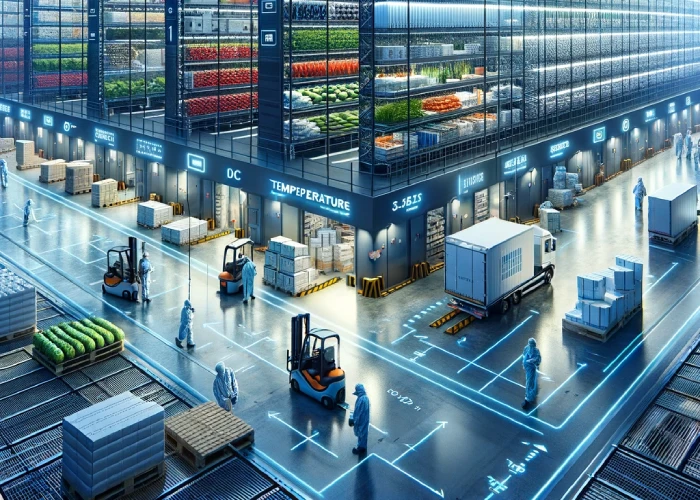Temperature-controlled warehousing is an essential component of the logistics industry, especially when it comes to the storage and transportation of temperature-sensitive products. These products include a wide range of items, from perishable foodstuffs to pharmaceuticals, each requiring specific environmental conditions to maintain their quality and integrity. This article delves into the significance, challenges, and advancements in the field of temperature-controlled warehousing for sensitive products.
Table of Contents
Understanding Temperature-Controlled Warehousing
Temperature-controlled warehousing refers to the process of storing goods in a temperature-regulated environment. These warehouses are equipped with refrigeration or heating systems that maintain a specific temperature range, which is crucial for products that can be adversely affected by temperature variations. The importance of these warehouses has grown exponentially with the increase in global trade and the demand for various products that require specific temperature conditions during storage.
Types of Products that Require Temperature-Controlled Warehousing
Perishable Foods: Items like fruits, vegetables, meat, dairy products, and frozen foods must be stored at specific temperatures to prevent spoilage and maintain freshness.
Pharmaceuticals: Many medications, vaccines, and other healthcare products require controlled temperatures to retain their efficacy and prevent degradation.
Cosmetics and Chemicals: Certain cosmetics and chemicals are sensitive to temperature changes, which can alter their composition and effectiveness.
Electronics: Some high-tech electronic components and devices need a controlled environment to prevent damage from humidity or temperature extremes.
Challenges in Temperature-Controlled Warehousing
Maintaining Consistent Temperatures: One of the primary challenges is ensuring that the temperature remains constant, even with frequent opening of doors and varying external weather conditions.
Energy Efficiency: Operating temperature-controlled warehouses is energy-intensive, making it essential to find ways to reduce energy consumption while maintaining optimal conditions.
Cost: The cost of setting up and maintaining these specialized warehouses is higher than standard warehousing, reflecting the investment in technology and energy required.
Regulatory Compliance: Many temperature-sensitive products, especially in the pharmaceutical sector, are subject to strict regulatory requirements, making compliance a significant challenge.
Technological Advancements
Advancements in technology have significantly improved the efficiency and reliability of temperature-controlled warehousing:
Automated Storage and Retrieval Systems (ASRS): These systems reduce the need for manual handling, thus minimizing the time products are exposed to non-optimal temperatures.
Advanced Monitoring Systems: Real-time monitoring and IoT devices ensure constant surveillance of temperature and humidity levels, providing alerts in case of deviations.
Energy-Efficient Cooling Systems: Innovations in refrigeration technology have led to more energy-efficient cooling systems, reducing the environmental impact and operating costs.
Blockchain Technology: The use of blockchain in the supply chain provides a transparent and tamper-proof way of monitoring and recording temperature data throughout the storage and transportation process.
Read more: Maximizing Efficiency in Logistics with Technology

Best Practices in Temperature-Controlled Warehousing
Implementing best practices is crucial for the effective management of temperature-controlled warehouses:
Regular Calibration and Maintenance: Regular checks and maintenance of temperature control systems ensure they operate efficiently and accurately.
Staff Training: Proper training of staff in handling temperature-sensitive products is crucial to avoid mishandling that could lead to product degradation.
Design Considerations: The design of the warehouse should facilitate consistent temperature management, including insulation, airflow management, and contingency plans for power outages.
Quality Control Processes: Implementing stringent quality control processes ensures that products are stored under optimal conditions throughout their time in the warehouse.
Read more: Warehousing and Fulfillment Excellence for Your Business
Conclusion
Temperature-controlled warehousing plays a pivotal role in the global supply chain, especially for temperature-sensitive products. The challenges in this field are significant, but they are being met with technological advancements and best practices that ensure the safe storage and transportation of these critical products. As global trade and the demand for diverse products continue to grow, the importance of temperature-controlled warehousing will only increase, making it a key area of investment and innovation in the logistics industry.
Read more: Optimize Space & Enhance Inventory Efficiency with Professional Warehousing Solutions





